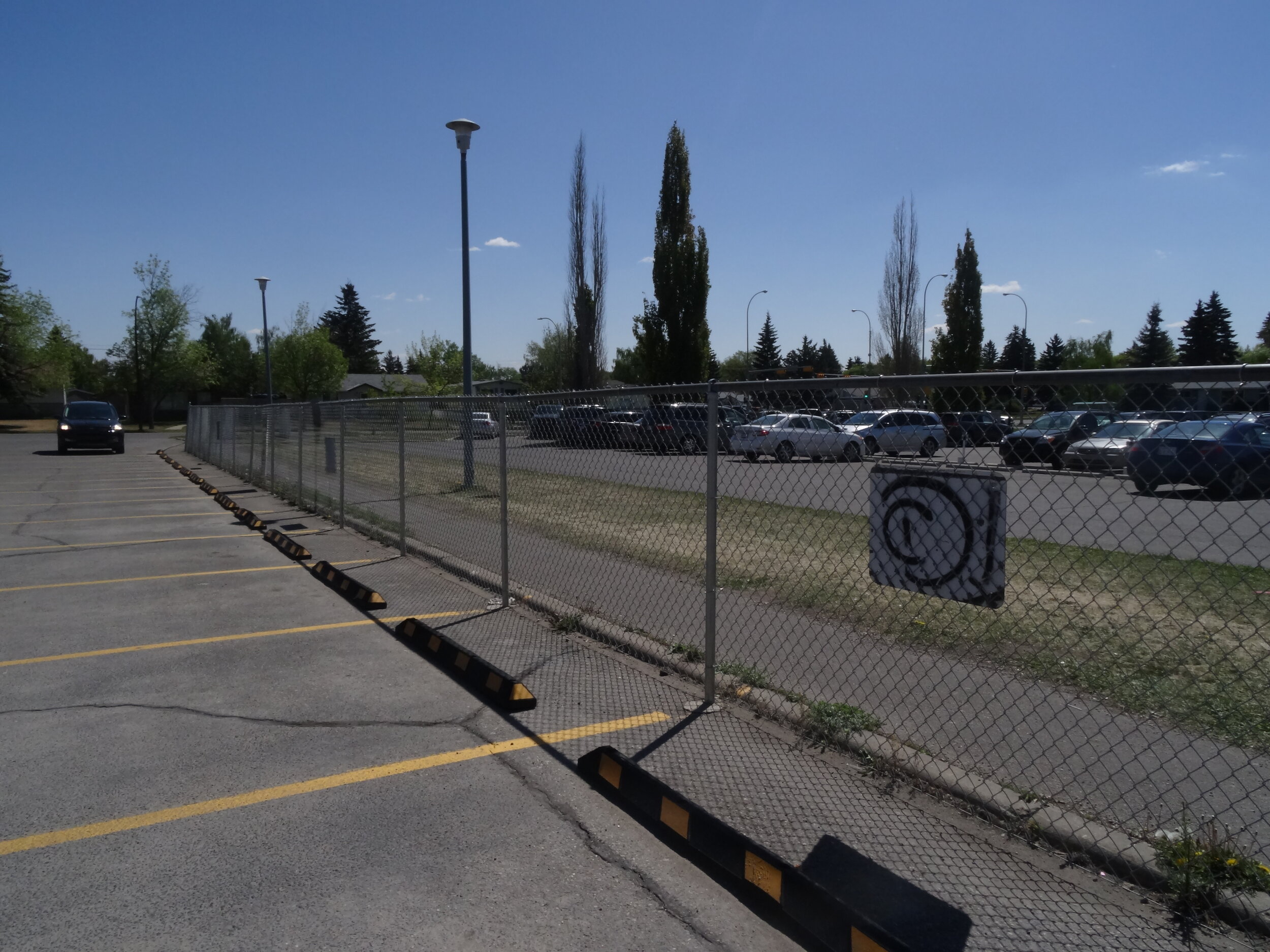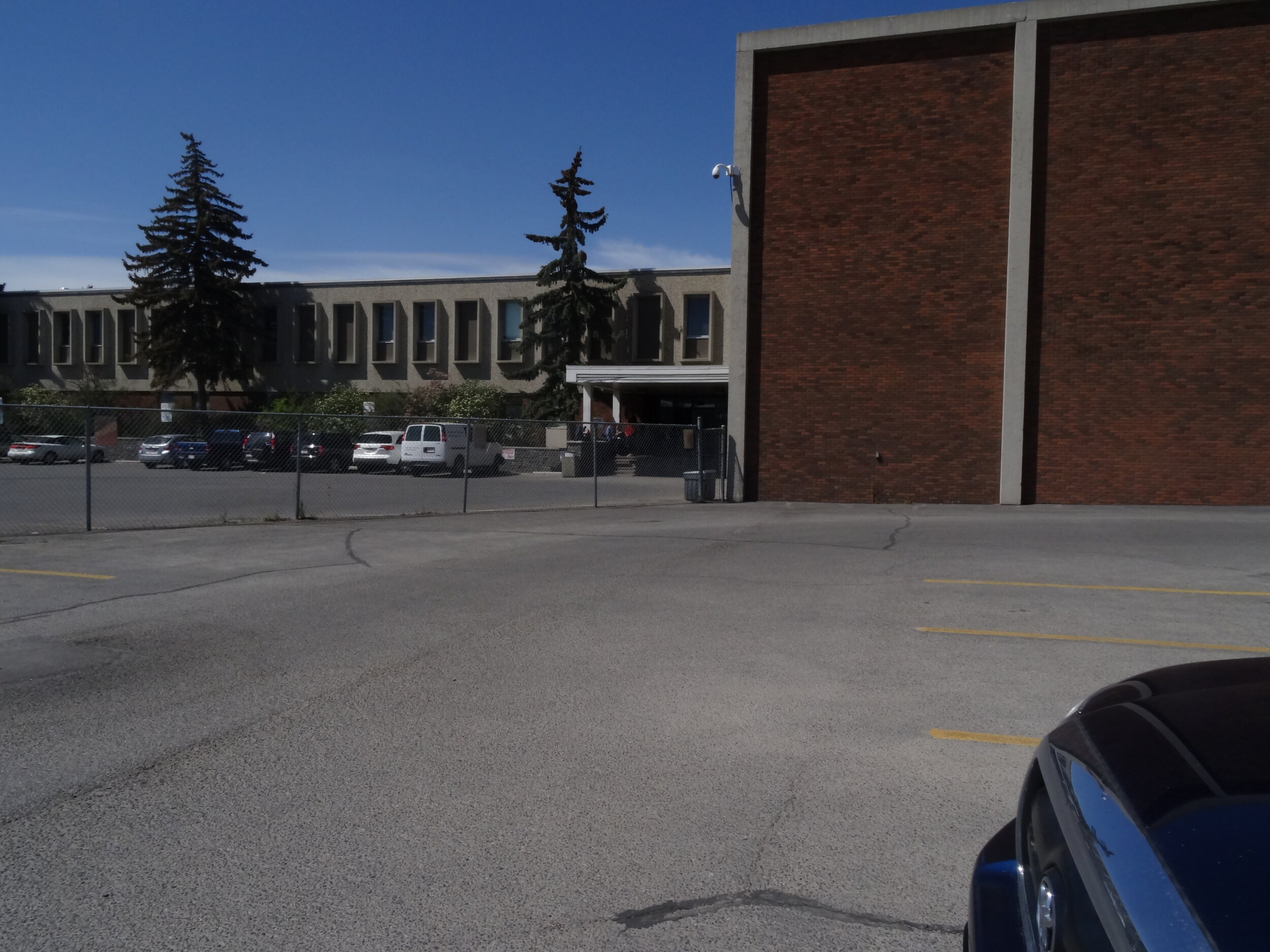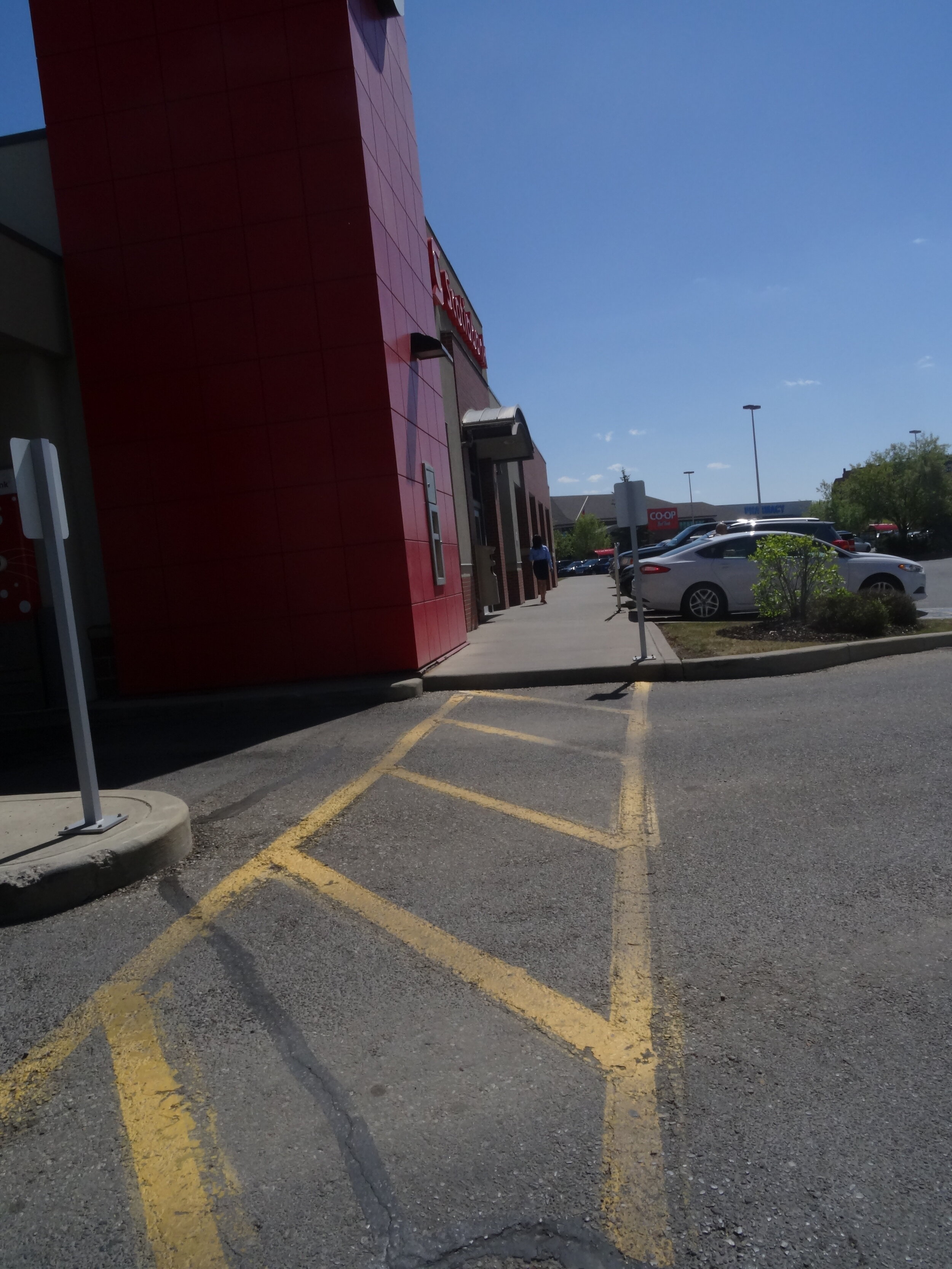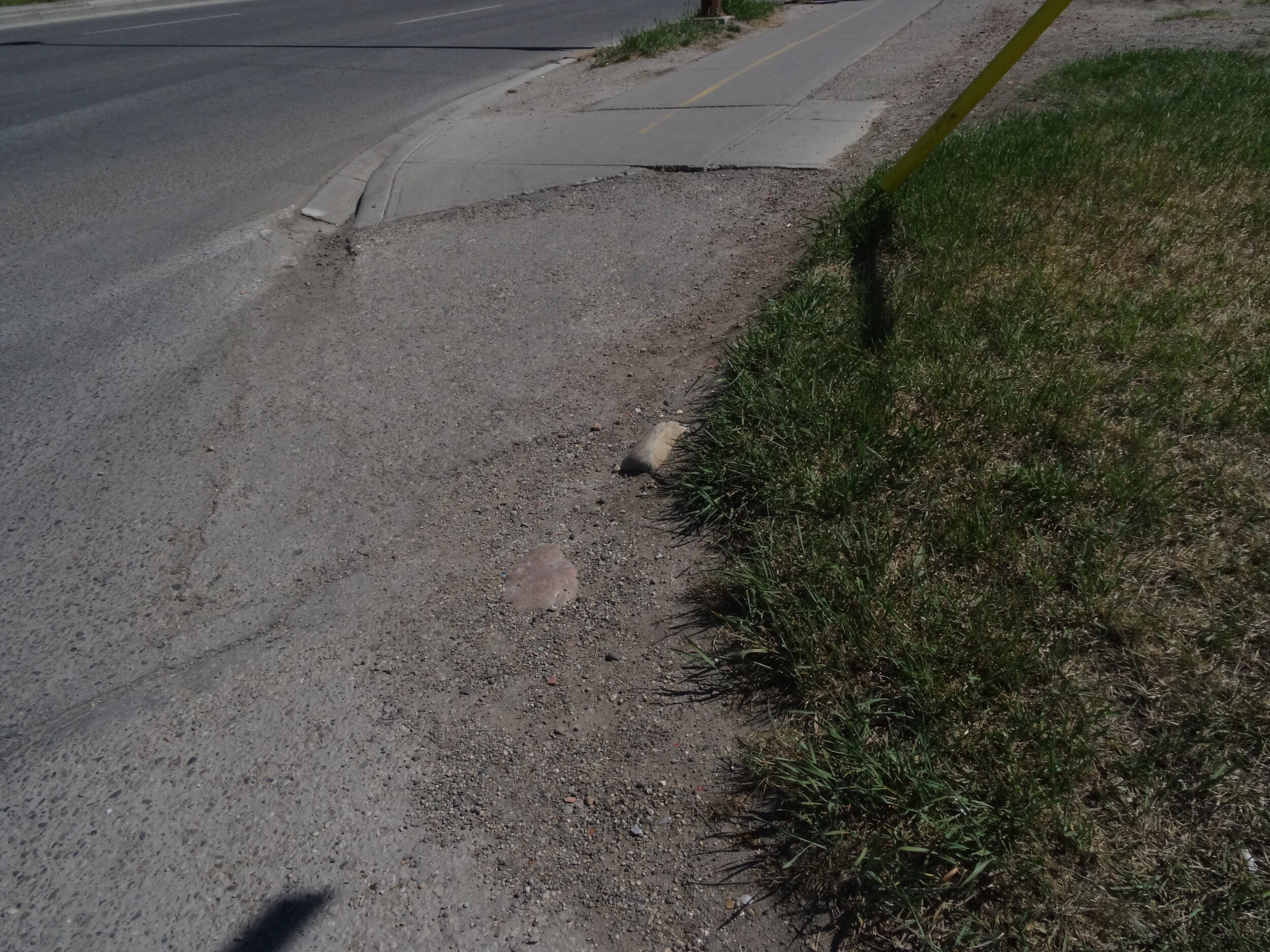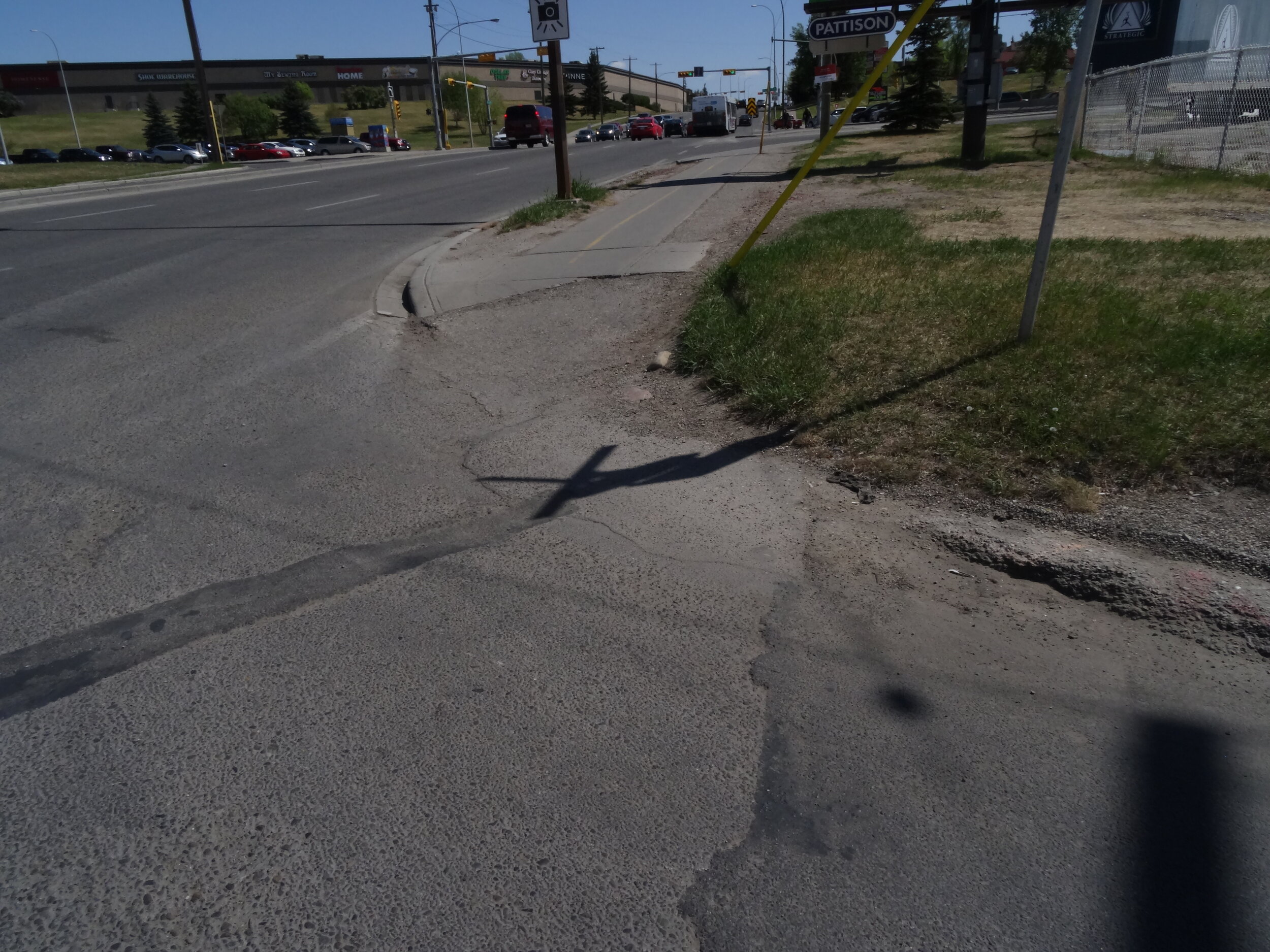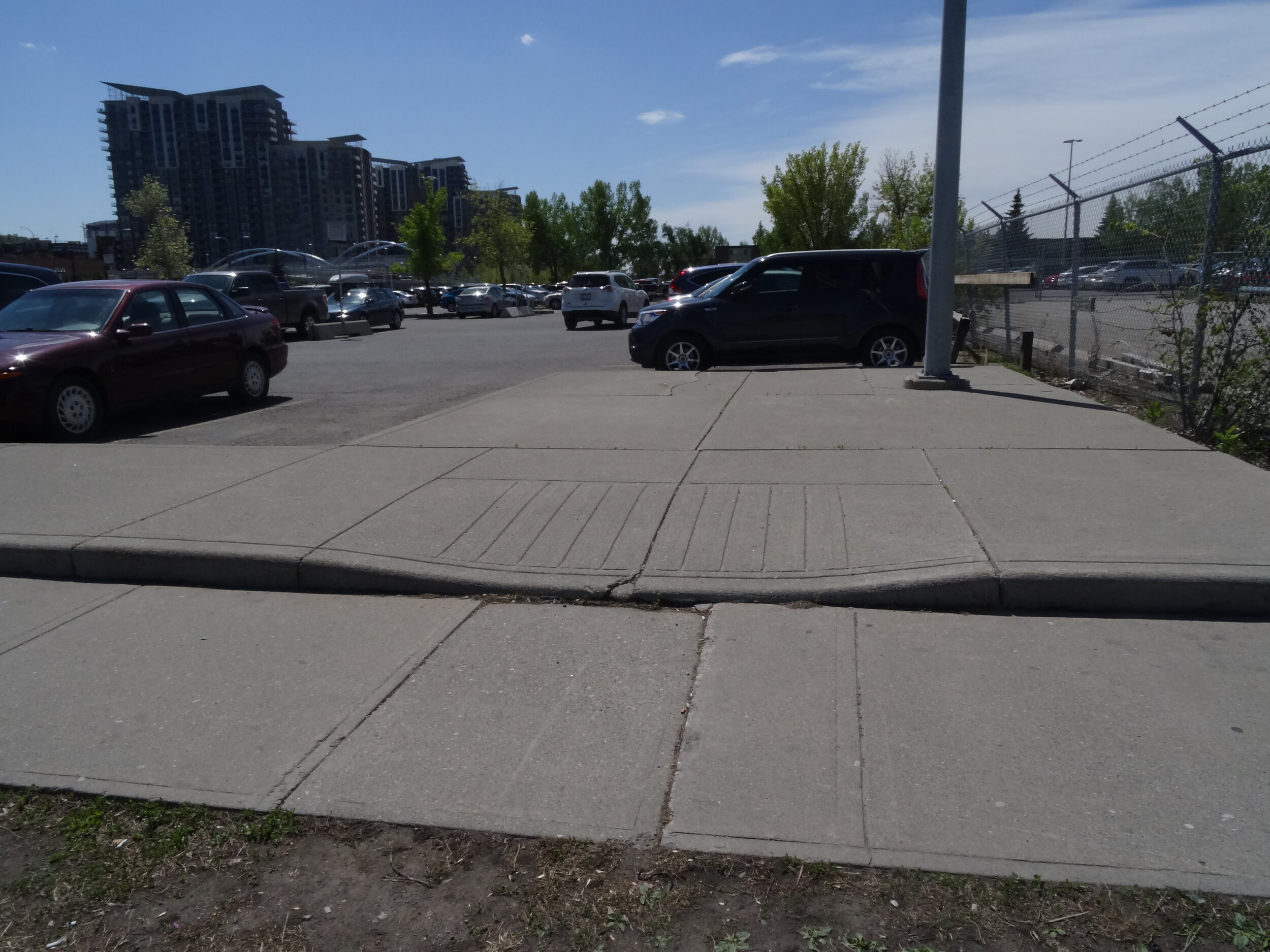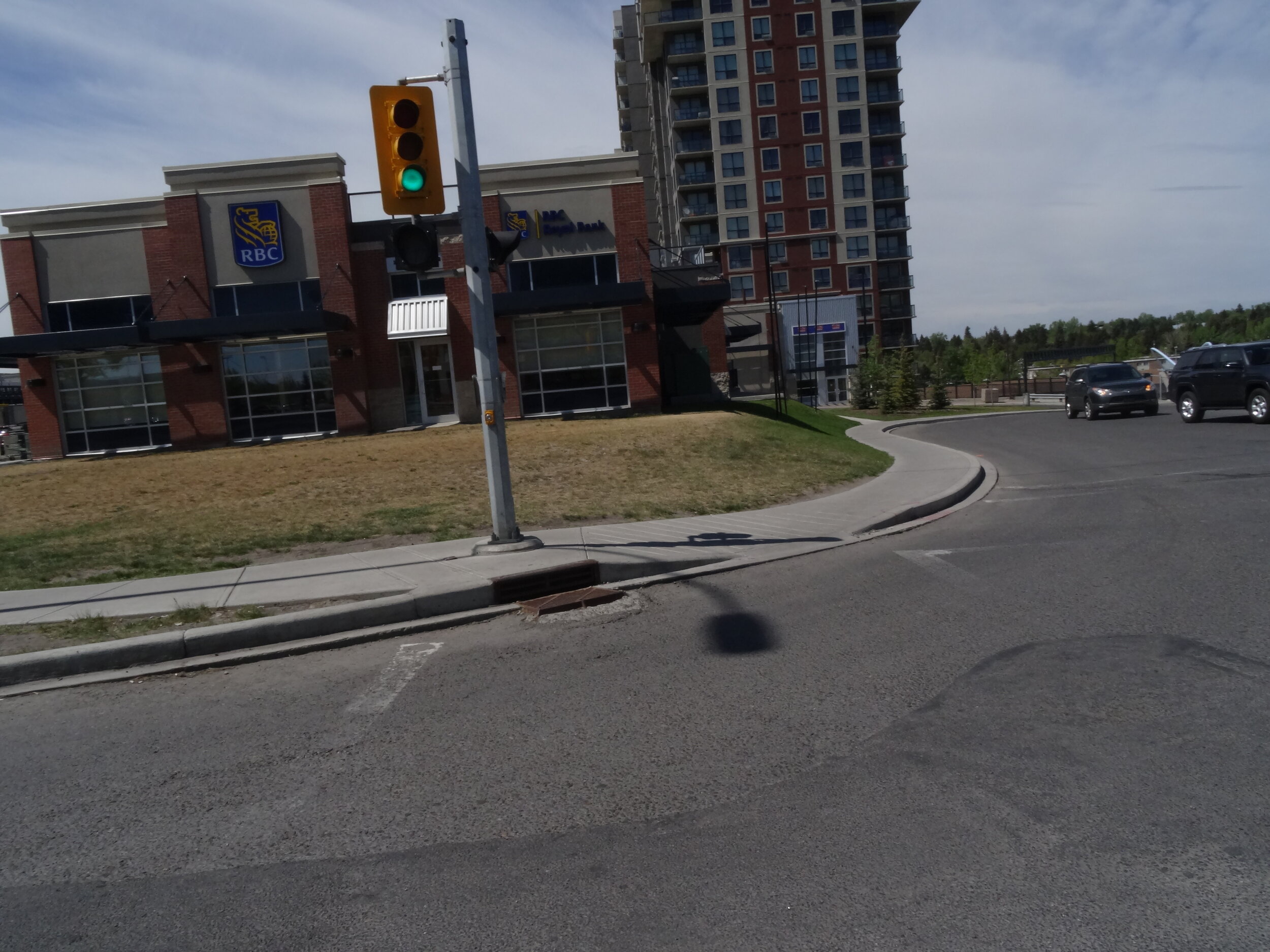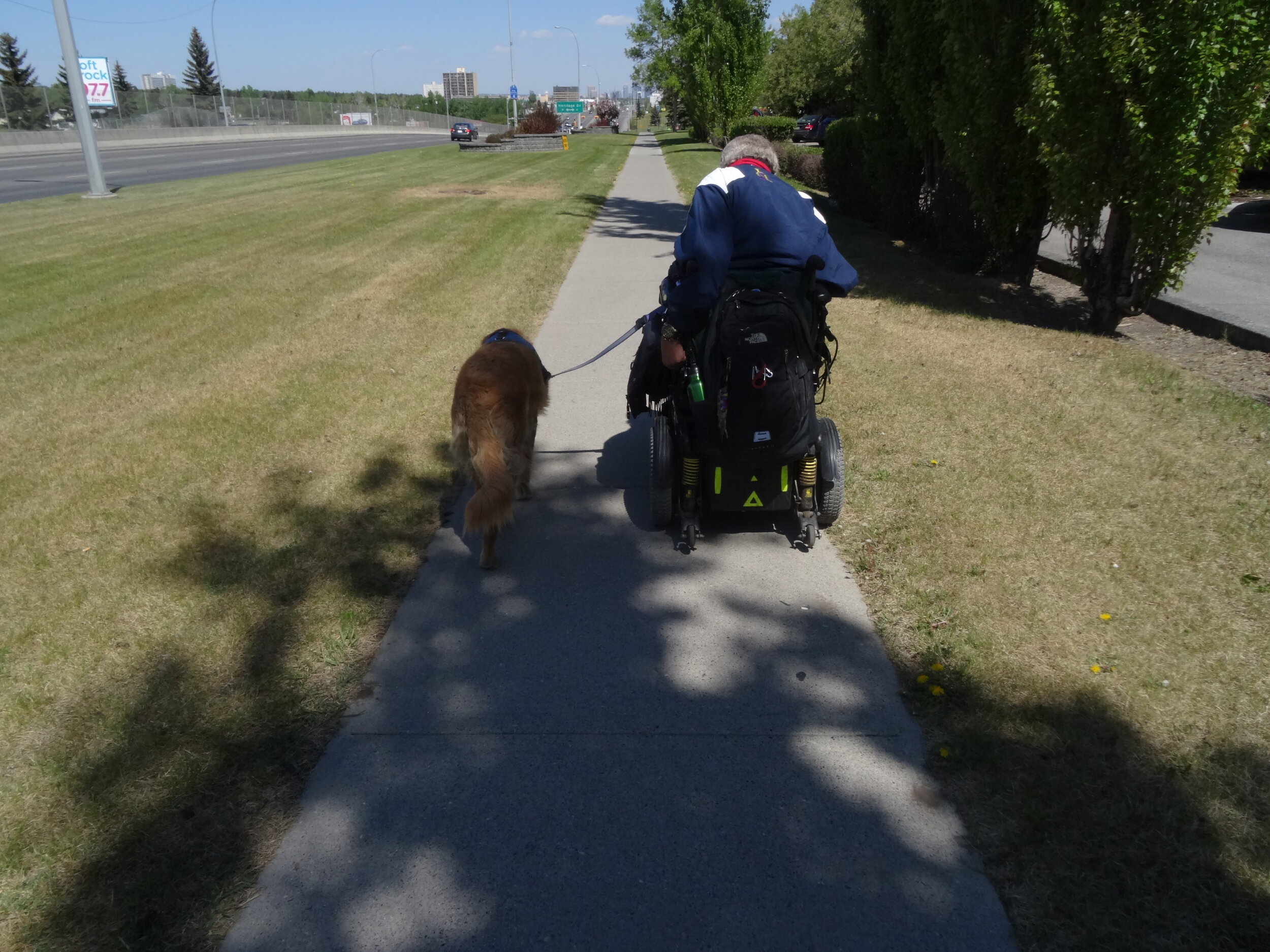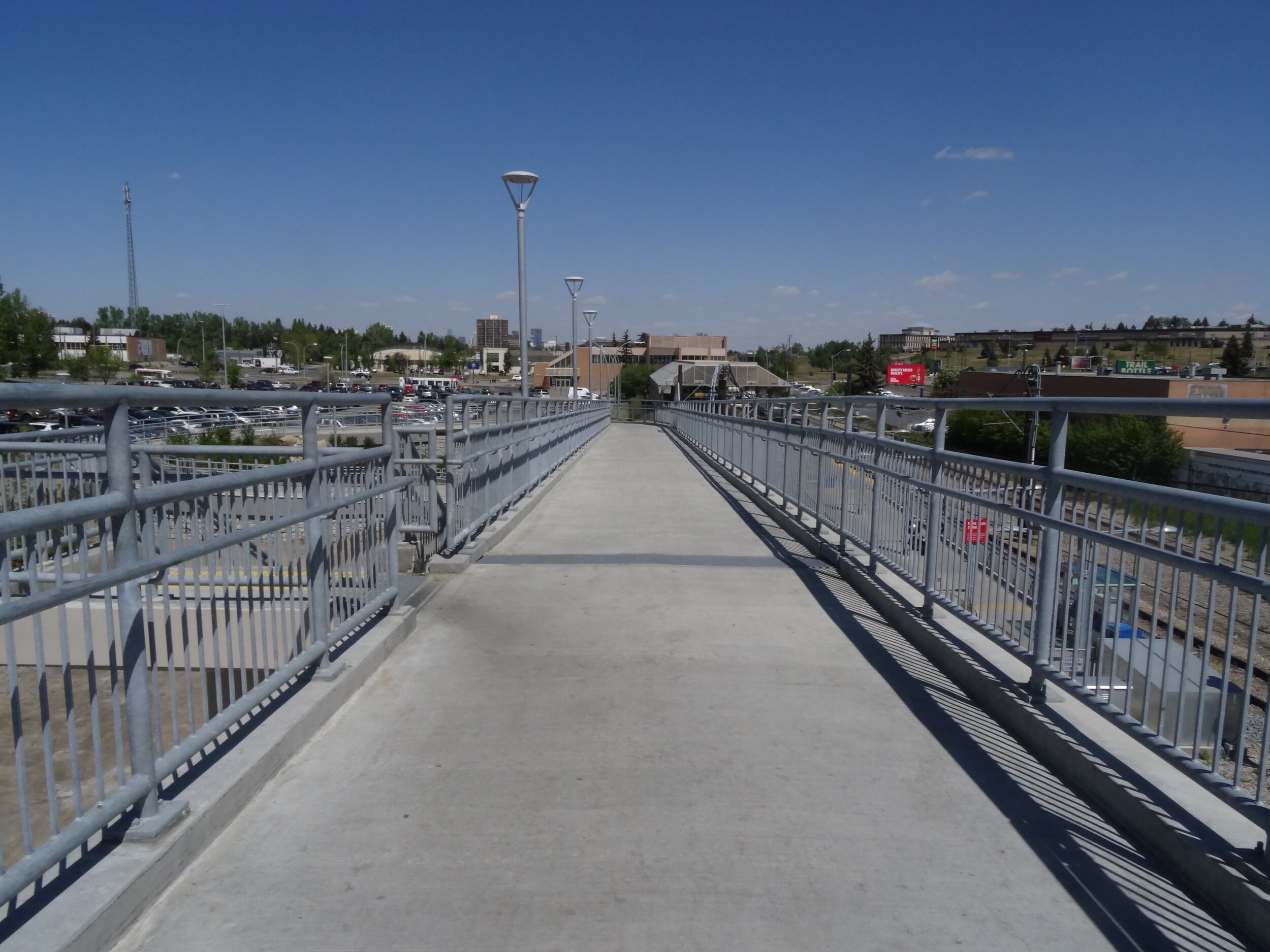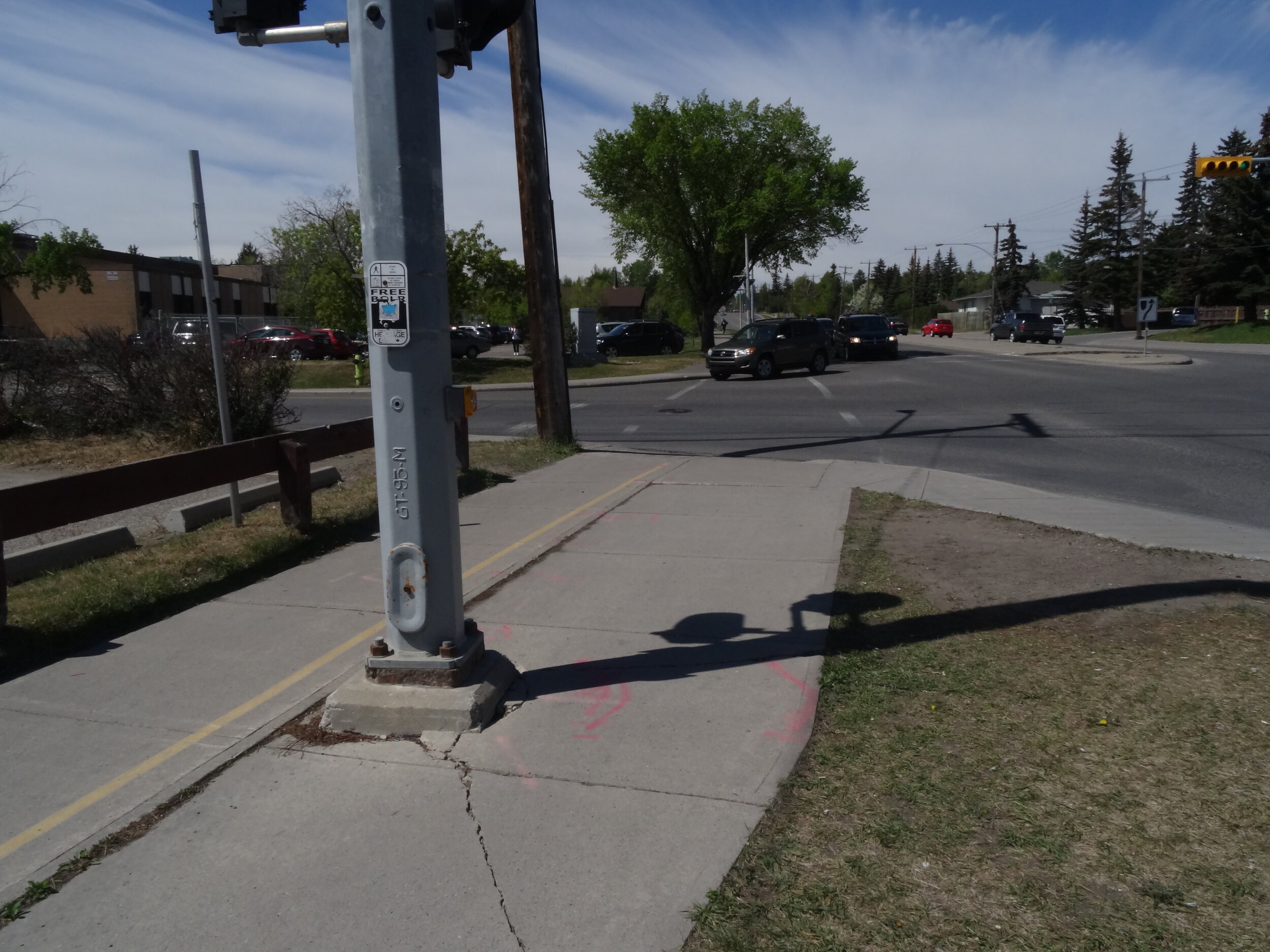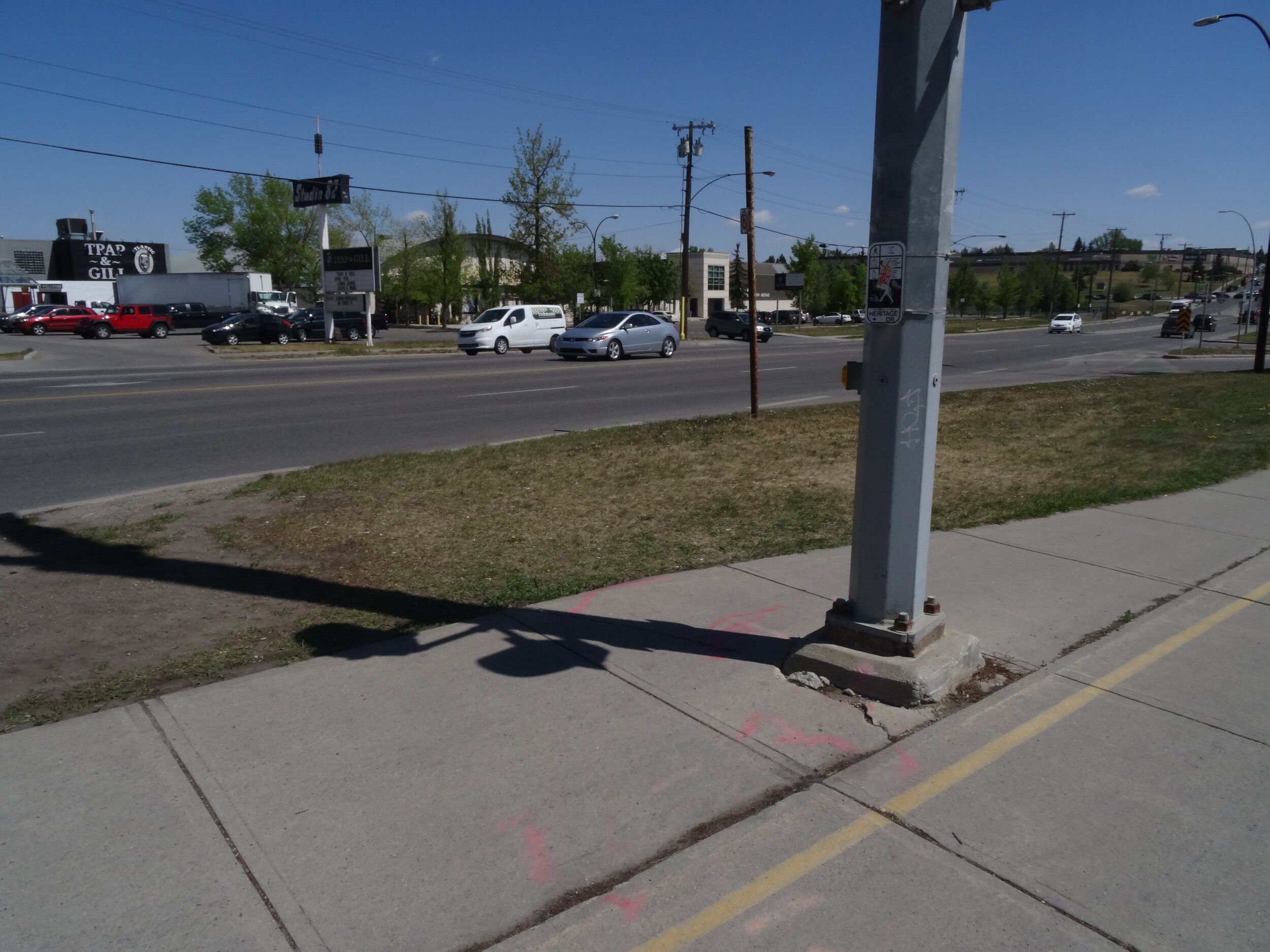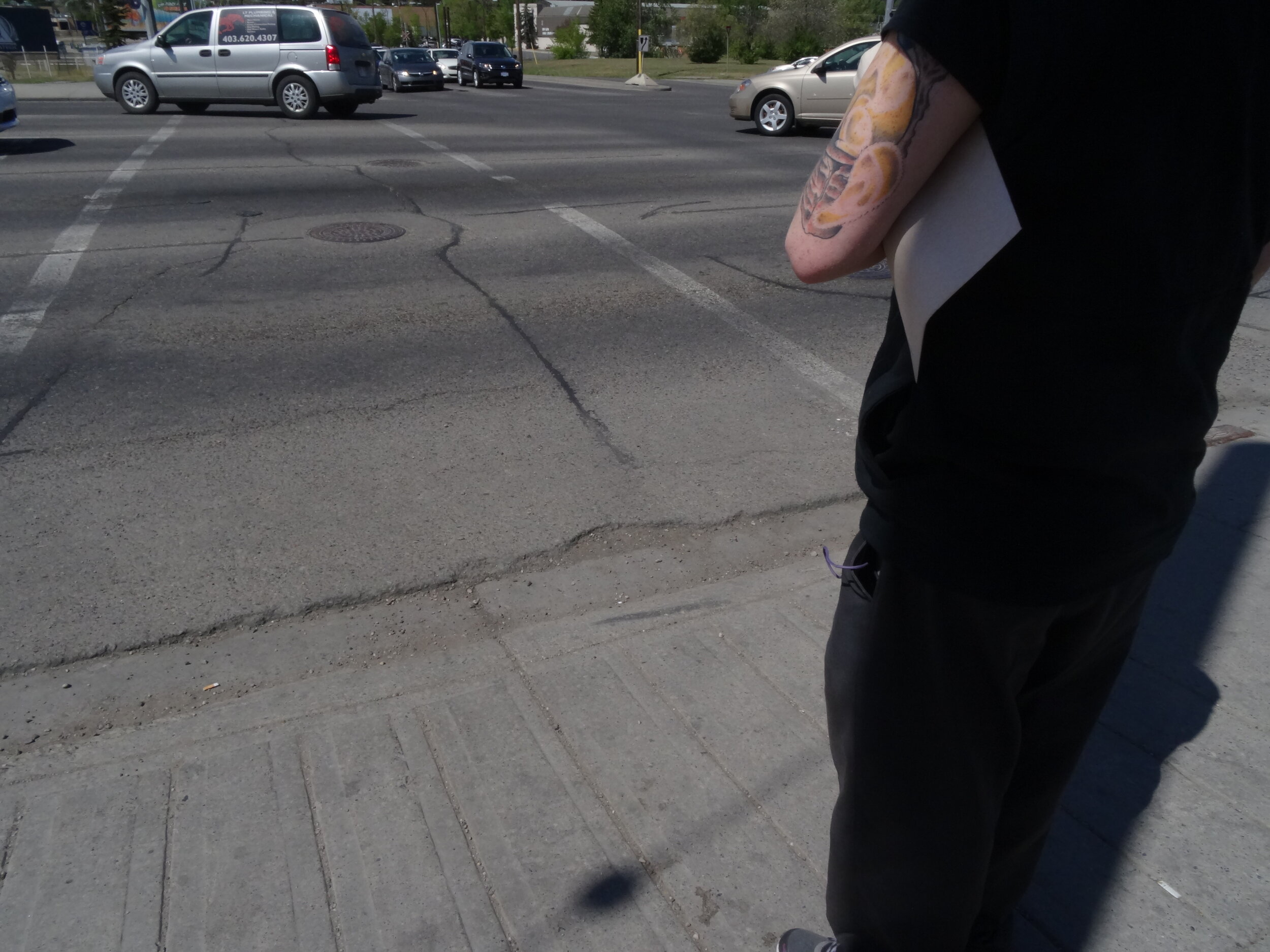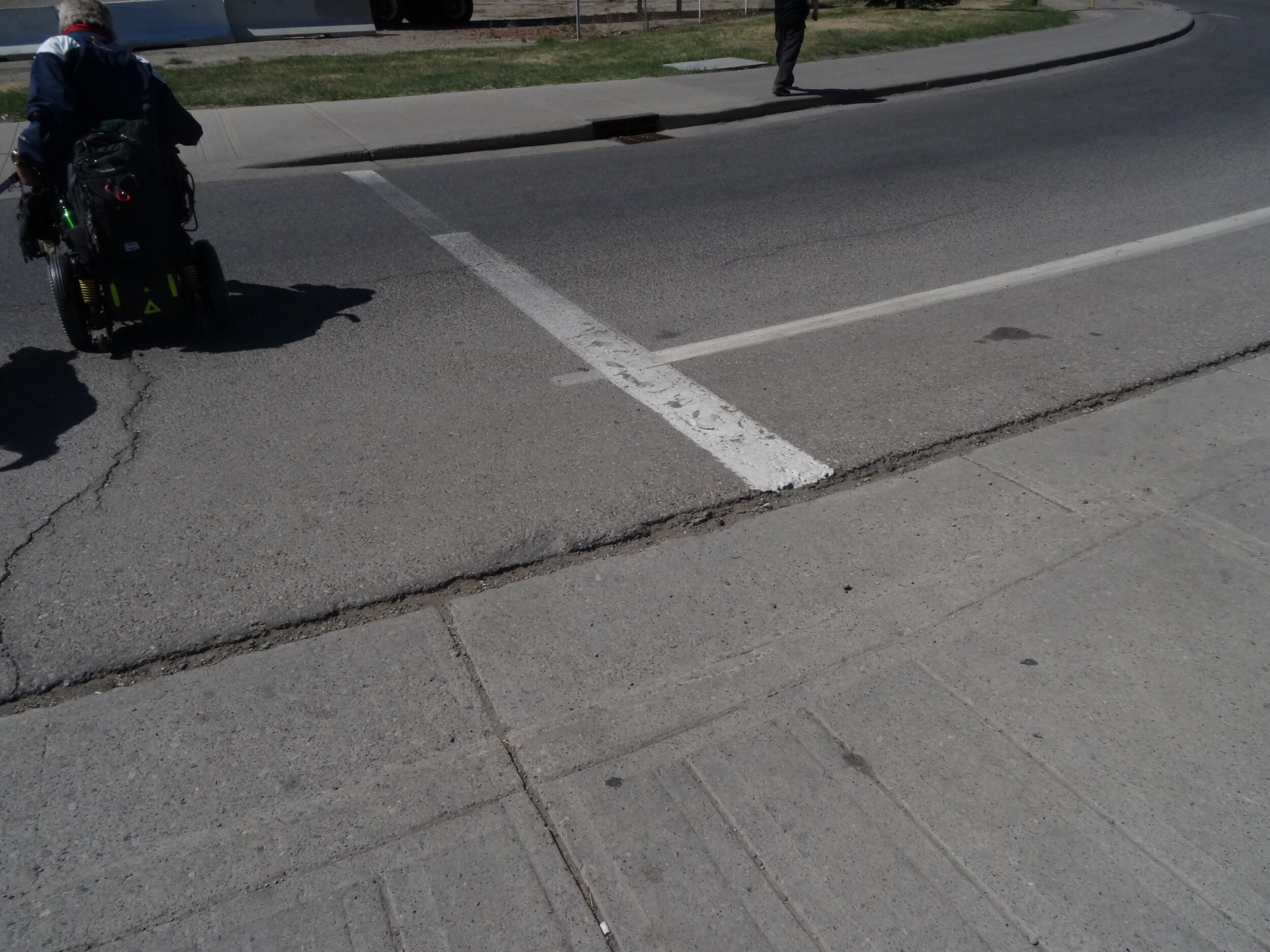Revisiting Access Denied
Access denied
by Roxanne LeBlanc
by Roxanne Leblanc
Re-post from 2016 with new photos & content. Accessibility is just as much of an issue in 2020, and has been compounded by the necessity for physical distancing during COVID-19.
When was the last time you, or maybe someone you knew, couldn’t get into a building, or a room, or computer files for that matter? Did you feel frustrated? Discouraged? Angry perhaps?
Now imagine living day in and day out not being able to get somewhere, or do something. A switch or button just out of reach. A step in the way of getting onto a sidewalk or through a door. A pole, tree or garbage bin in the middle of the path.
For many people, including children, seniors and the disabled, access to the world at large, and sometimes even just their neighbourhoods, isn’t always easy. But it isn’t something most of us notice. Unless someone gives us specific examples, these barriers are invisible to the ‘average’ person.
An “accessibility audit” can be helpful; a fancy word for checking out a building, street, train etc. to see how easy it is for any and ALL people to use them.
Ellen took us on an accessibility walk audit in Bridgeland in 2015, and scoots across a difficult intersection. The curb cuts on the far side require her to scoot in front of on-coming traffic when there’s snow on the ground. At a different location, she had to back up 50 feet when the sidewalk ended with no room for a 3-point turn.
Ellen was one of a handful of Bridgelanders who spearheaded the volunteer Spirit of Bridgeland Riverside project, to help the neighbourhood cope with the challenges of snow removal on public infrastructure.
Since the Active Neighbourhoods Canada project began in 2014, the project team has been doing design work with communities to make them more walkable and bikeable. We knew it was important to see how easy it is for people in wheelchairs, walkers or strollers, to get around. So we asked Cal Schuler, owner of Spectra Alternative Solutions and a wheelchair user, to tour Acadia with us and point out some problem areas. We also brought along a camera - sometimes a picture really is worth a thousand words.
(Since then, Cal has also joined us in Marlborough and High River to share his expertise. Some of those photos are shared here, as well as photos of Ellen, who volunteered to show us some of her experiences scooting around Bridgeland).
Kids in Marlborough experience the world through a different lens, and try their hand at navigating with a wheelchair. Photo credit: John Campbell.
A slippery pathway could launch someone on wheels off the edge on the right. A ‘bumper’ could help.
An awkwardly placed bollard, in an otherwise beautiful park in High River.
Following are a few examples of what we found in Acadia. During our audit, we got to talk to a local resident who uses a scooter who had a few suggestions.
Timing of lights, particularly at intersections on major roads, needs to be long enough to allow people who walk slowly, including children, to get across safely.
Fences everywhere, many which did not really seem necessary. Rather than being able to walk across a large area, fences mean long detours for pedestrians.
“Right on red” turns – really dangerous since drivers are often so busy watching for traffic coming from the left they don’t think to check if anyone is walking on the right side of their car.
Grey on grey curb-cuts, which create problems for individuals with poor vision or people walking at dusk. Where is that curb cut?
For those of you who prefer visuals, here are photos of a few ‘invisible’ obstacles you’ve probably seen but never really thought about.
Moments like these (above) inspired the idea of a “De-Fencing Campaign” among Acadia residents.
Lessons in curb-cuts (above): have curb-cuts; make them smooth; wide enough for users; ensure no one has to wheel into on-coming traffic to use them.
If there isn’t room for you and your companion, it’s not wide enough! Also, ensure ramps are gradual enough for those powering wheelchairs with their hands. Even motor-powered scooters or chairs can run into challenges on ramps if they can’t get a grip, such as in snowy conditions.
Beg buttons, if present, should be accessible. This means, the path on the button side needs to be wide enough, and the button should be at an appropriate height for all users. Generally, placing posts in the middle of the sidewalk should be avoided.
Avoid grey-on-grey curb edges for the visually impaired, and try to include a change of texture.







